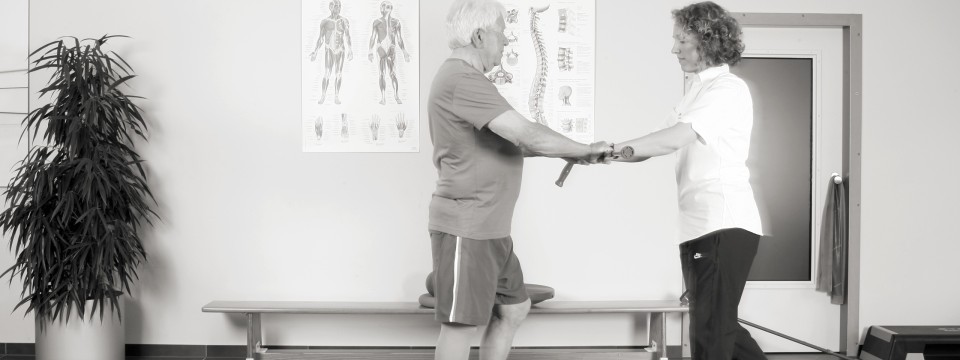What are K Levels?
Few things are as frustrating as having an insurance company refuse to cover equipment or services you know your patient needs. This is especially true for prosthetic devices, because they have such a huge impact on mobility and quality of life. One of the best things you can do to help your patients is to clearly document their current and potential functional status. And if they need a lower limb prosthetic, the best way to do that is by communicating their K level.
Medicare established K levels, also called Medicare Functional Classification Levels (MFCL), in 1995 as a means to quantify need and the potential benefit of prosthetic devices for patients after lower limb amputation. The rating system is still used today by Medicare, Medicaid and many other insurance companies to determine eligibility for payment or reimbursement.
As mobility specialists, you (PTs) are often the most qualified member of the rehab team to establish a patient's K level. For you this means two things: 1) You need to document your patient’s K level and 2) You need to pass that information along to their referring physician and their prosthetist. Below are Medicare’s descriptions of the five (0-4) K Levels:
K Levels
Level 0
Does not have the ability or potential to ambulate or transfer safely with or without assistance and a prosthesis does not enhance their quality of life or mobility.
Level 1
Has the ability or potential to use a prosthesis for transfers or ambulation on level surfaces at fixed cadence. Typical of the limited and unlimited household ambulator.
Level 2
Has the ability or potential for ambulation with the ability to traverse low level environmental barriers such as curbs, stairs or uneven surfaces. Typical of the limited community ambulator.
Level 3
Has the ability or potential for ambulation with variable cadence. Typical of the community ambulator who has the ability to traverse most environmental barriers and may have vocational, therapeutic, or exercise activity that demands prosthetic utilization beyond simple locomotion.
Level 4
Has the ability or potential for prosthetic ambulation that exceeds basic ambulation skills, exhibiting high impact, stress, or energy levels. Typical of the prosthetic demands of the child, active adult, or athlete.
According to the American Academy of Orthotists and Prosthetists, no one method is considered the gold standard for establishing K-Levels. The rating is left up to the clinician doing the assessment, and unfortunately, many consider it over-simplified and too subjective.
According to a 2016 survey of prosthetists, published in the Archives of Physical Medicine and Rehabilitation, 67% of respondents didn’t think the K level could accurately capture a patient’s rehab potential. For this reason, many clinicians turn to more established clinical outcome measures (OMs).
Outcome measures commonly used to establish K levels include the following:
- Amputee Mobility Predictor (AMP)
- Patient Assessment Validation Evaluation Test (PAVET)
- Prosthesis Evaluation Questionnaire (PEQ)
- Timed Up and Go (TUG)
- Timed Walk Tests
- Distance Walk Tests
The Amputee Mobility Predictor (AMP) is the most frequently used outcome measure by far (by a factor of 2, according to the survey just mentioned). The AMP can be administered in as little as fifteen minutes on patients with (AMPPro) or without a prosthesis (AMPnoPro). A simple conversion table (DOCX) allows for a quick K level determination. The AMP’s use for assessing functional status of lower limb amputees was validated by researchers at the University of Miami School of Medicine in 2002, and you can find a copy of the test and its instructions in their paper here.
Whichever method you choose to determine K level, it is important that you take the initiative to communicate your assessment to both your patient’s doctor and their prosthetist. This will help increase the odds this information will be used to justify medical necessity. You can learn more about how to do this in this detailed guide created by the American Academy of Orthotists and Prosthetists.
You also want to make sure you educate your patients. The Amputee Coalition, a non-profit “dedicated to enhancing the quality of life for amputees and their families,” emphasizes the importance of patients knowing their K level. They offer a patient-friendly handout, Do you know Your K-Level?, as a free download.
Ottobock also offers a free download, Documentation Tips: Justifying Functional Level, to help ensure your patients get the devices they need.
Sources
- http://www.oandp.org/olc/course_extended_content.asp?frmCourseId=ACA066EC-443A-4822-822C-89BC1CBD684E&frmTermId=k-levels
- http://www.oandp.org/olc/lessons/html/SSC_06/Gailey_AMP_Arch_of_Phys_Med_Rehab_2002.pdf
- https://www.cms.gov/Research-Statistics-Data-and-Systems/Computer-Data-and-Systems/ESMD/Downloads/Lower-Limb-Prosthesis-Suggested-Electronic-Clinical-Template.pdf
- http://www.archives-pmr.org/article/S0003-9993(02)47460-6/fulltext
- http://www.archives-pmr.org/article/S0003-9993(16)00180-5/fulltext
- http://www.archives-pmr.org/article/S0003-9993(02)47460-6/fulltext
- http://www.amputee-coalition.org/inmotion/2013-iss5-sep-oct/do-you-know-your-k-level.pdf
- http://www.oandp.org/olc/lessons/html/SSC_06/section_06.asp?frmCourseSectionId=07
- https://www.oandp.com/opie/ampDownloads/assets/docs/AMP_with_score_and_graph.docx

